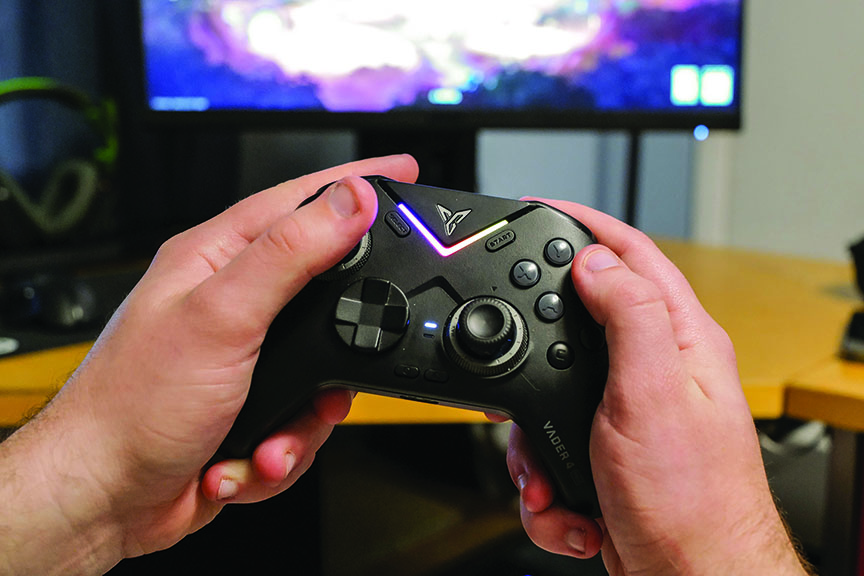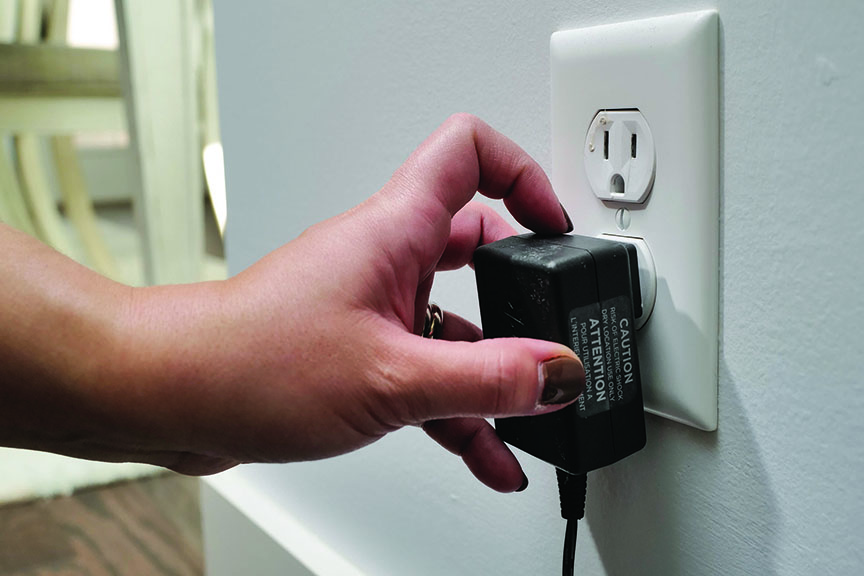Are energy wasters hiding in your home?
September 2025

Powering off between gaming sessions can save energy.
by Miranda Boutelle, Contributing Columnist
Out of sight, out of mind. It is easy to overlook the hidden energy wasters in our homes. Yet, every plugged-in device and ready-to-use appliance can lead to higher electric bills.
Let’s see if we can find some hidden energy savings for you.
Your water heater could be using more energy than necessary. Storage water heaters heat water to a preset temperature. When hot water is used, cold water enters the tank, lowering the temperature, and the water is reheated to that preset level. If the water heater is set higher than needed, it wastes energy. Most water heaters are set to 140 degrees at the factory. The U.S. Department of Energy recommends setting the temperature to 120 degrees. This will save energy and reduce the risk of scalding. Do not set it lower than 120 degrees to prevent bacteria development in the tank.

Upgrade your hot tub pump to reduce the amount of energy it uses.
Exterior security lights, porch lights and barn lights can use more energy than needed. If they are on every night, all year long, that adds up to 4,380 hours, or half the hours in a year. If those lights use outdated or inefficient technology, they waste energy. With that many hours, even a slight increase in efficiency can yield significant energy savings. Switch to energy-efficient LED bulbs. If lights need to stay on, consider upgrading to motion sensor lights to avoid drawing energy all night.
Pools and hot tubs can also be big energy wasters. Since you don’t see the pumps or heaters by design, it’s challenging to know when they are operating and consuming energy.
Pumps filter water to keep it clean and safe for swimming. Energy Star-certified pumps run at lower speeds and can be programmed to match your pool’s filtering needs, according to the Environmental Protection Agency. They can pay for themselves in two years, are quieter and can prolong the life of your pool’s filtering system. Schedule your hot tub to a lower temperature when you’re not using it to reduce energy use. If your electric utility offers time-of-use rates, consider scheduling accordingly.

Look around your home for items that are plugged in. If they aren’t in use, unplug them.
Plug load refers to any device in your home that is plugged into an outlet. As we use more and more appliances and technology in our homes, plug load energy use increases. Research what is plugged in around your home. If you aren’t using it, unplug it. For computer stations and entertainment centers, consider using smart power strips. These devices sense when energy is being used and turn peripheral devices on or off as needed.
Gaming consoles are another hidden energy waster. Gamers often put consoles in rest mode when not in use. This allows them to complete updates and reduces start-up time for the next session. It also means they are still consuming energy even when not actively used. Powering off between gaming sessions can save energy. Ask the gamers in your life to power off. It may require a bit more time for updates, but every kilowatt-hour counts when it comes to saving energy.
It’s easy to make a habit of powering down and unplugging once you identify everything drawing power in your home. For upgrades, reach out to your electric utility about available rebates to help cover costs.
Miranda Boutelle writes on energy efficiency topics for the National Rural Electric Cooperative Association.
